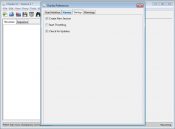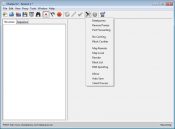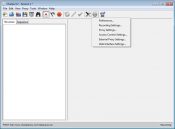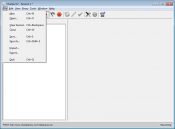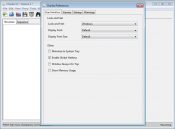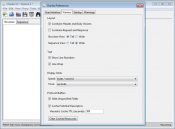- Review
Charles is a powerful web debugging proxy that enables users to inspect and manipulate HTTP and HTTPS traffic between their devices and the internet. It is particularly useful for identifying and resolving issues such as API errors, slow network responses, and misconfigured servers.
With its robust features and ease of use, Charles has become a staple in the toolkit of web developers, testers, and network administrators alike. Below, we delve into its standout features, advantages, and limitations, followed by answers to frequently asked questions.
HTTP/HTTPS Traffic Analysis
At the heart of Charles is its ability to intercept, record, and display HTTP and HTTPS traffic in real-time. It captures requests and responses, including headers, parameters, and payloads, giving users complete visibility into their application’s communication with servers.
The SSL proxying feature is particularly noteworthy. It allows users to decrypt and view encrypted HTTPS traffic, which is invaluable for debugging secure APIs or web pages. With this capability, you can pinpoint issues such as malformed requests, slow responses, or unauthorized access.
Throttling for Network Simulation
One of the standout features of Charles is its throttling capability. This allows users to simulate various network conditions, such as low bandwidth, high latency, or packet loss. Developers can use this feature to test how their applications perform under real-world conditions, ensuring they deliver a seamless user experience regardless of network quality.
Throttling is fully customizable, enabling you to mimic specific scenarios, such as a slow 3G connection or intermittent Wi-Fi, to identify and resolve performance bottlenecks.
Request and Response Modification
Charles empowers users to edit and modify requests and responses on the fly. This feature is particularly useful for testing APIs, as you can tweak parameters, headers, or payloads without making changes to the actual client or server.
For example, you can test error handling by sending invalid data or simulate different server responses to evaluate how your application behaves under various conditions. This flexibility makes Charles an invaluable tool for API debugging and testing.
Session Recording and Exporting
Session recording is another powerful feature of Charles, allowing users to capture and save traffic logs for later analysis. These logs can be exported in formats such as HAR (HTTP Archive), making them easy to share with team members or use with other debugging tools.
This capability is particularly helpful for collaborative debugging, as it enables teams to review traffic patterns, identify issues, and devise solutions based on real-world data.
Advantages
- Provides real-time visibility into HTTP and HTTPS traffic, including secure connections.
- Offers SSL proxying to decrypt and debug encrypted HTTPS traffic.
- Supports network throttling to simulate various real-world conditions.
- Enables request and response modification for comprehensive API testing.
- Allows session recording and exporting for collaborative debugging and analysis.
Limitations
- The user interface can feel overwhelming to beginners due to its extensive feature set.
- SSL proxying requires certificate installation, which might pose challenges for less technical users.
- Resource-intensive on systems during extended use, particularly with high traffic volumes.
- The paid license, while offering excellent value, may be a barrier for some users.
Frequently Asked Questions
1. Can Charles decrypt HTTPS traffic?
Yes, it can decrypt HTTPS traffic using its SSL proxying feature. You need to install a Charles root certificate on your device to enable this functionality.
2. Is Charles suitable for testing APIs?
Absolutely. It allows you to inspect, modify, and replay API requests and responses, making it ideal for API debugging and testing.
3. How does throttling in Charles work?
Throttling lets you simulate different network conditions, such as low bandwidth or high latency. This helps in testing how applications perform under various scenarios.
Conclusion
Charles is a powerful and versatile web debugging proxy that simplifies the process of analyzing and debugging HTTP and HTTPS traffic. With features like SSL proxying, network throttling, and request modification, it caters to a wide range of use cases, from debugging APIs to testing application performance under various conditions.
While the interface may have a learning curve for beginners, its extensive capabilities more than justify the effort required to master it. Whether you’re a developer, tester, or network administrator, Charles provides the tools you need to diagnose issues, optimize performance, and deliver high-quality applications.
For anyone working in web development or application testing, Charles is an indispensable tool that combines power, flexibility, and ease of use.
- SSL Proxying view SSL requests and responses in plain text
- Bandwidth Throttling to simulate slower Internet connections including latency
- AJAX debugging view XML and JSON requests and responses as a tree or as text
- AMF view the contents of Flash Remoting / Flex Remoting messages as a tree
- Repeat requests to test back-end changes
- Edit requests to test different inputs
- Breakpoints to intercept and edit requests or responses
- Validate recorded HTML, CSS and RSS/atom responses using the W3C validator

